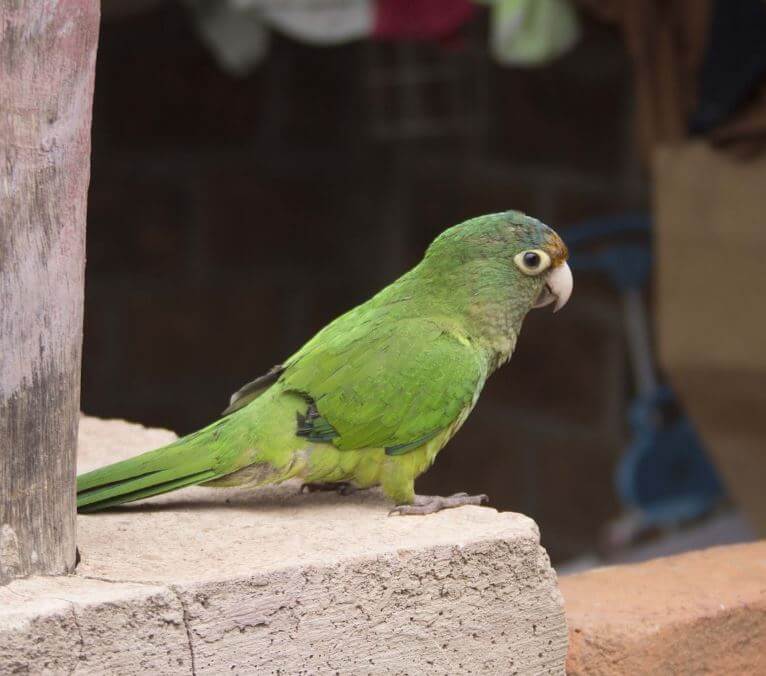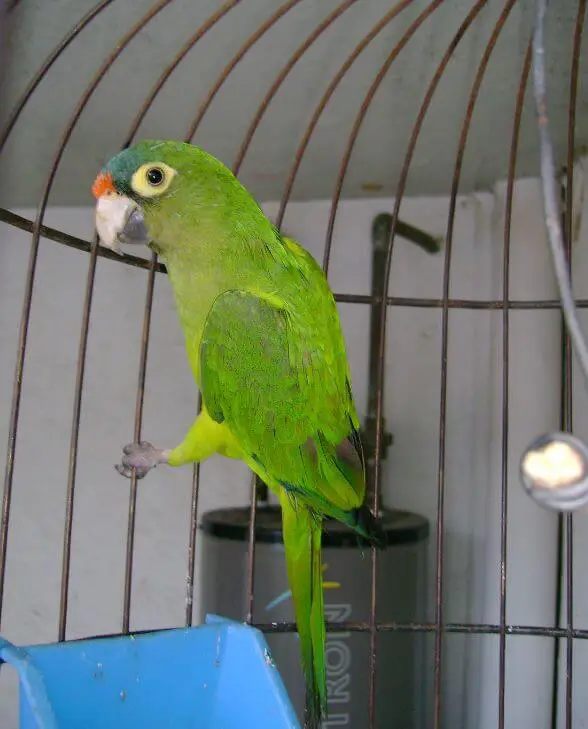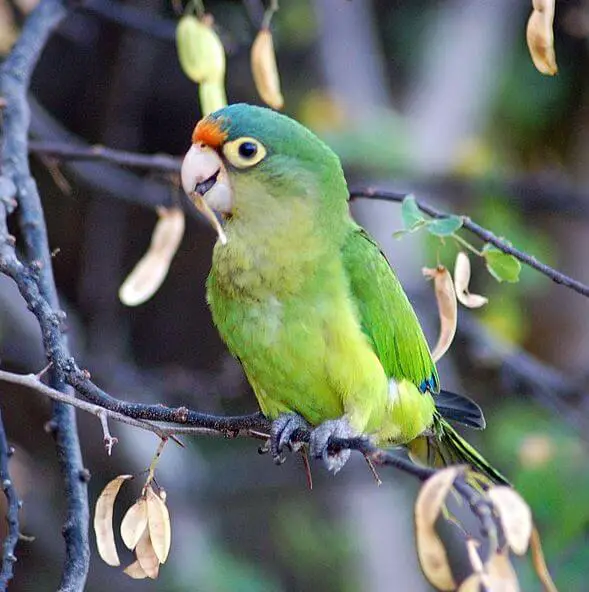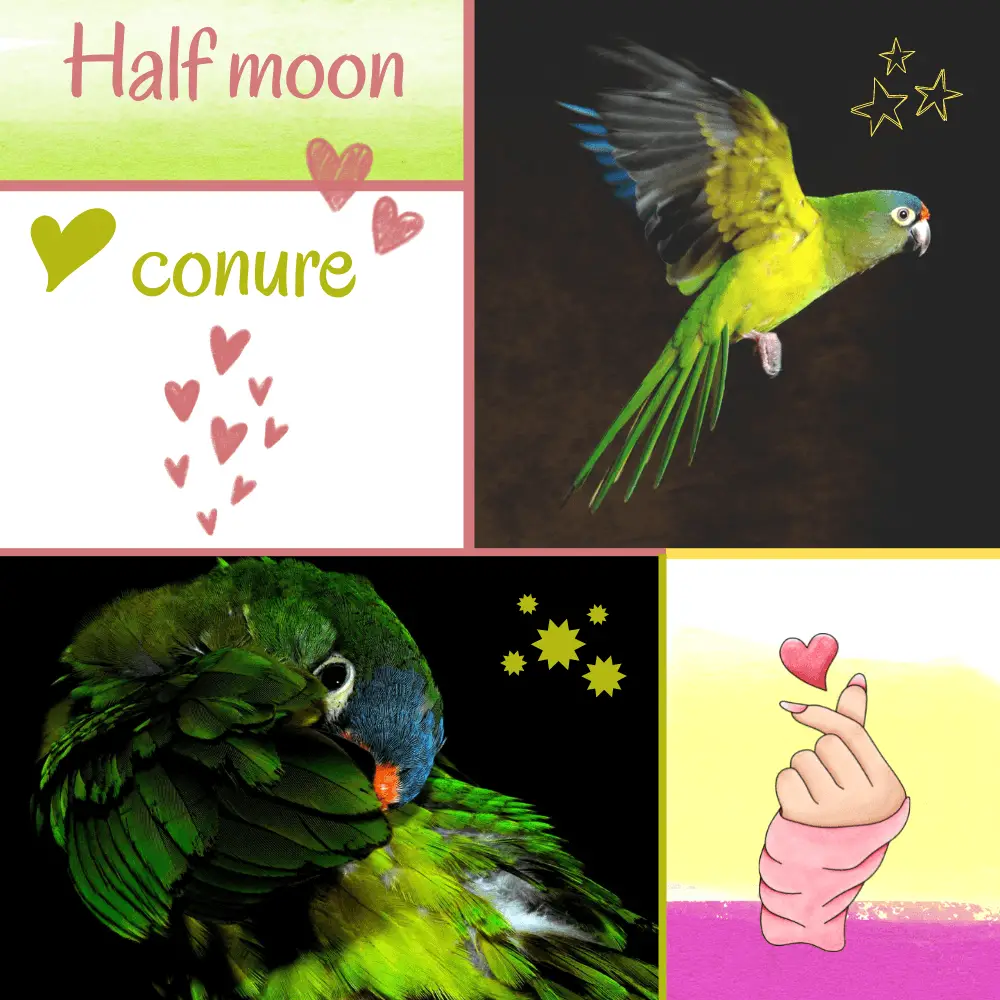The half moon conure is a medium-sized dwarf parrot species known for its excitable personality and for being a bit quieter than some other conures.
Like most birds, half moon conures need plenty of social interaction, exercise, and mental stimulation, but they can make an excellent pet for the right person.
Scientific name: Eupsittula canicularis, previously Aratinga canicularis 1.
Adult size: 9.5 inches and about 75 grams
Half moon conure lifespan: About 20 years
Origin and history
Half moon conures are native to Mexico and Costa Rica where they live in large herds of up to 100. They can be found in treetops, lowlands, and even savannahs in these large groups except during season loves when they reproduce.
They are unique because they nest on termite mounds or in abandoned woodpecker holes. The half-moon conure is not an endangered species, so it is sometimes found as a pet but is not as popular as other types of conure.
Half moon conure personality

half moon conures are very active birds and love to play and climb. A well-socialized bird will benefit from its owner’s attention and is generally good-natured.
They are not as enthusiastic about bathing as some other birds, but can sometimes enjoy a water mist. half moon conures are generally not as destructive as some other conures and parrots can be.
Half moon conure talking
These birds are quiet compared to other conures, but they will still make noise. Their volume is lower though, so they’re a good option if you want a medium-sized bird that doesn’t talk too much. They are not known to be talkers but can mimic certain sounds.
Half Moon Conure Colors
These conures are mostly bright green with their back and wing feathers gradually changing to emerald green.
They have a bare eye ring like macaws, a horn-colored beak instead of black, and an orange stripe just above their beak with a blue forehead. Males and females have the same coloring.
Caring for the half moon conure
Like most conures, the half-moon variety needs plenty of attention and space. A crate will keep them safe, but it’s not the only space they should have supervised access to.
Regular veterinary care should also be provided to help keep a conure healthy and catch any potential health issues early. Birds often hide symptoms of illness until they are seriously ill.
Conure health
Parrots in hot climates tend to get cold and have breathing problems, but dirty environments can also cause problems for half-moon conures.
Aspergillosis, pneumonia, and other respiratory problems are the most commonly seen health problems, but liver and behavioral problems can also occur if proper diet and exercise are not provided.
Clean environments, good nutrition, plenty of space, and time for activities can help prevent some common conditions from occurring in a half moon conure.
Diet and nutrition

Half moon conures should ideally eat high-quality bird pellets as their staple diet. This can be supplemented with a mix of seeds, fresh fruits, vegetables, and healthy treats like sugar-free cereals, pasta, and whole-grain bread.
Changing the types of fruits and vegetables offered daily can also provide variety and mental stimulation to a bird.
Like most parrots, half moon conures need plenty of exercise and space to stretch their wings. Safe flying areas are ideal, but time outside of a cage should be provided daily for a bird to explore, play with toys, climb, and be mentally stimulated.
A cage should be reserved for secure accommodation when supervision is not possible. Otherwise, cage toppers, gymnasiums, flight pads, and other spaces should be made available to a bird.
Where to Adopt or Buy a half moon conure
half moon conures aren’t as common as some other types of pet parrots, so it will take a bit more work if you’re looking to adopt or buy one.
Some bird-specific stores and larger pet retailers may have these birds available, but rescuing one from a reputable bird rescue or buying one from a breeder are your likeliest options.
Other types of conure:

